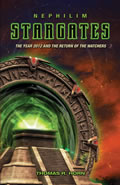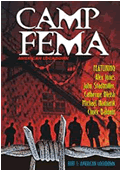PART 6
By Thomas R. Horn
January 23, 2013
NewsWithViews.com
Petrus Romanus, PROJECT LUCIFER, and the Vatican's astonishing exo-theological plan for the arrival of an alien savior. You only think you know what's coming...
ARE 'THEY' INVOLVED WITH 'THEM'?
Based on facts detailed in the previous entries, we started this part of the investigation saying the question is not whether humans were, can be, or are being hybridized, but whether alien/demon agencies are involved in the process.
Today,
what some call “alien abduction,” in which a breeding program
allegedly exists resulting in alien/human hybrids, seems but a contemporary
retelling of similar DNA harvesting and genetic manipulation by those
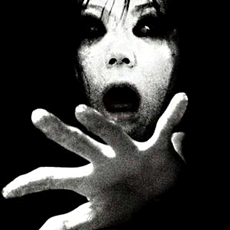 mysterious
beings called “Watchers” whose genetic modification activities
we have discussed.
mysterious
beings called “Watchers” whose genetic modification activities
we have discussed.
In his book, Confrontations—A Scientist’s Search for Alien Contact, highly regarded UFO researcher, Dr. Jacques F. Vallée, once argued: “Contact with [aliens is] only a modern extension of the age-old tradition of contact with nonhuman consciousness in the form of angels, demons, elves, and sylphs.”[i] Later, Vallée more closely identified the operative power behind these “aliens” as equivalent to the fallen Watcher angels of the Days of Noah:
Are these races only semi-human, so that in order to maintain contact with us, they need crossbreeding with men and women of our planet? Is this the origin of the many tales and legends where genetics plays a great role: the symbolism of the Virgin in occultism and religion, the fairy tales involving human midwives and changelings, the sexual overtones of the flying saucer reports, the biblical stories of intermarriage between the Lord’s angels, and terrestrial women, whose offspring were giants?[ii]
Another highly respected and often-quoted UFO researcher, John Keel, echoed the same when he stated in Operation Trojan Horse:
Demonology is not just another crackpot-ology. It is the ancient and scholarly study of the monsters and demons who have seemingly coexisted with man throughout history.… The manifestations and occurrences described in this imposing literature are similar, if not entirely identical, to the UFO phenomenon itself. Victims of demonomania [possession] suffer the very same medical and emotional symptoms as the UFO contactees.… The Devil and his demons can, according to the literature, manifest themselves in almost any form and can physically imitate anything from angels to horrifying monsters with glowing eyes. Strange objects and entities materialize and dematerialize in these stories, just as the UFOs and their splendid occupants appear and disappear, walk through walls, and perform other supernatural feats.[iii]
Associate professor of psychology Elizabeth L. Hillstrom was even more inflexible on comparisons between “alien” experiences and historical demonic activity, quoting in her book Testing the Spirits an impressive list of scholars from various disciplines who concluded that similarities between ETs and demons is unlikely coincidental. Hillstrom cites authorities of the first rank including Pierre Guerin, a scientist associated with the French National Council for Scientific Research, who believes, “The modern UFOnauts and the demons of past days are probably identical,”[iv] and veteran researcher John Keel, who reckons, “The UFO manifestations seem to be, by and large, merely minor variations of the age-old demonological phenomenon.”[v] Harvard psychiatrist and Pulitzer Prize-winner John Mack risked his career when he announced that the abduction phenomenon is very much real albeit an assault of a quasi-spiritual nature. The following is a chilling excerpt from Mack’s Passport to the Cosmos:
Some abductees feel that certain beings seem to want to take their souls from them. Greg told me that the terror of his encounters with certain reptilian beings was so intense that he feared being separated from his soul. “If I were to be separated from my soul,” he said, “I would not have any sense of being. I think all my consciousness would go. I would cease to exist. That would be the worst thing anyone could do to me.”[vi]
Mack recorded page after page of such transparently demonic phenomenon. Another victim described her horror saying, “I knew instinctively that whatever that thing was next to me wanted to enter me. It was just waiting to enter me.”[vii] Of course, this screams demon possession, but, against the evidence, Mack’s naturalistic worldview steered him toward the extraterrestrial hypothesis. In contrast, Vallée connects the dots: “The ‘medical examination’ to which abductees are said to be subjected, often accompanied by sadistic sexual manipulation, is reminiscent of the medieval tales of encounters with demons.”[viii] With these sorts of characterizations coming from the secular scholars, it should be no surprise that we also connect UFO/ET phenomenon with demonic activity.
Incubi, Succubi, Daemons, and Elementals
In contrast to the “demons” of later Judeo-Christian belief, French UFO researcher, Aimé Michel (1919–1992), preferred the daemons of earlier Greek antiquity as the culprits of UFO and ET activity. The difference between what most people today think of as a demon (an incorporeal, malicious spirit that can seduce, vex, or possess a human) and the daemons of ancient Greek Hellenistic religion and philosophy is that daemons were corporeal (though often invisible and constituted of material unlike human or animal genetics) and could be good (eudoaemons) or evil (cacodaemons). Eudoaemons (also called agathodaemons) were sometimes associated with benevolent angels, the ghosts of dead heroes, or supernatural beings who existed between mortals and gods (as in the teachings of the priestess Diotima to Socrates in Plato’s Symposium), while cacodaemons were spirits of evil or malevolence who could afflict humans with mental, physical, and spiritual ailments. (In psychology, cacodemonia or cacodemomania is the pathological belief in which the patient is convinced he/she is inhabited, or possessed, by a wicked entity or evil spirit.)
This delineation, and its potential spiritual and physical ramifications on humans, was reflected in the works of Italian Franciscan theologian, exorcist and advisor to the Supreme Sacred Congregation of the Roman and Universal Inquisition in Rome, Ludovico Maria Sinistrari (1622–1701). Sinistrari, who was regarded as an expert on sexual sins, wrote extensively of individuals accused of amorous relations with demons. His work, De daemonialitate, et incubis et succubis, may be considered today among the earliest accounts of what could otherwise be called “alien abduction” resulting in hybrid offspring because the incubi and succubi of Sinistrari’s opinion were neither evil spirits nor fallen angels, but corporeal beings “created midway between humans and angels.”[ix] Sinistrari found that monks and nuns were of particular interest to the incubi/succubi, presumably due to pent-up sexual frustrations resulting from celibacy oaths that made them easier targets (which makes one wonder what the venerated St. Cecilia really meant when she said to Valerian, “There is a secret, Valerian, I wish to tell you. I have as a lover an angel of God who jealously guards my body”[x]). Physical evidence, including semen, left on site following intercourse with the phantoms was often copious, negating the possibility in at least some cases that the event was psychological. One such incident between a sleeping nun and an incubus in the form of a spectral “young man” had multiple eyewitnesses and was recorded by Sinistrari in his work, Demoniality. The Catholic Father writes:
In a Monastery (I mention neither its name nor that of the town where it lies, so as not to recall to memory a past scandal), there was a Nun, who, about trifles usual with women and especially with nuns, had quarrelled with one of her mates who occupied a cell adjoining to hers. Quick at observing all the doings of her enemy, this neighbour noticed, several days in succession, that instead of walking with her companions in the garden after dinner she retired to her cell, where she locked herself in. Anxious to know what she could be doing there all that time, the inquisitive Nun betook herself also to her cell. Soon she heard a sound, as of two voices conversing in subdued tones, which she could easily do, since the two cells were divided but by a slight partition. [There she heard] a peculiar friction, the cracking of a bed, groans and sighs, her curiosity was raised to the highest pitch, and she redoubled her attention in order to ascertain who was in the cell.
But having, three times running, seen no other nun come out but her rival, she suspected that a man had been secretly introduced and was kept hidden there. She went and reported the thing to the Abbess, who, after holding counsel with discreet persons, resolved upon hearing the sounds and observing the indications that had been denounced her, so as to avoid any precipitate or inconsiderate act. In consequence, the Abbess and her confidents repaired to the cell of the spy, and heard the voices and other noises that had been described. An inquiry was set on foot to make sure whether any of the Nuns could be shut in with the other one; and the result being in the negative, the Abbess and her attendants went to the door of the closed cell, and knocked repeatedly, but to no purpose: the Nun neither answered, nor opened. The Abbess threatened to have the door broken in, and even ordered a convert to force it with a crow-bar. The Nun then opened her door: a search was made and no one found. Being asked with whom she had been talking, and the why and wherefore of the bed cracking, of the sighs, etc., she denied everything.
But, matters going on just the same as before, the rival Nun, become more attentive and more inquisitive than ever, contrived to bore a hole through the partition, so as to be able to see what was going on inside the cell; and what should she see but an elegant youth lying with the Nun, and the sight of whom she took care to let the others enjoy by the same means. The charge was soon brought before the bishop: the guilty Nun endeavoured still to deny all; but, threatened with torture, she confessed having had an intimacy with an Incubus.[xi]
These entities were associated with the forest sylvans and fauns by Augustine in his classic, De Civiatate Dei (“City of God”):
There
is, too, a very general rumor, which many have verified by their own experience,
or which trustworthy persons who have heard the experience of others corroborate,
that sylvans and fauns, who are commonly called “incubi,”
had often made wicked assaults upon women, and satisfied their lust upon
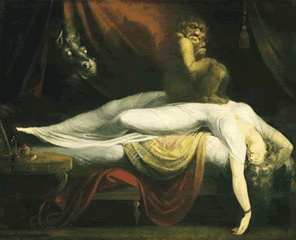 them;
and that certain devils, called Duses by the Gauls, are constantly attempting
and effecting this impurity is so generally affirmed, that it were impudent
to deny it.[xii]
them;
and that certain devils, called Duses by the Gauls, are constantly attempting
and effecting this impurity is so generally affirmed, that it were impudent
to deny it.[xii]
The incubus in Henry Fuseli’s famous 1781 oil painting The Nightmare
These devils usually appeared at night as either a seductive demon in a male human form (incubi, from the Latin incubo, “to lie upon”) having phantasmagoric intercourse with women, or elsewhere as a sensual female presence (succubi) who collected semen from men through dream-state copulation. Some believe these entities are one and the same. That is, the same spirit may appear as a female in one instance to collect male seed, then reappear elsewhere as a male to transfer the semen into a womb. The etymology (the study of the history of words, their origin, form, and meaning) of the word “nightmare” actually derives from the Old English maere for a “goblin” or “incubus” and variously referred to an evil female spirit that afflicted sleepers with a feeling of suffocation and bad dreams and/or elsewhere as a seductress. While religious credo involving incubi and succubi was widespread in mythological and legendary traditions, Sinistrari defied established church theology on the topic when he wrote: “Subject to correction by our Holy Mother Church, and as a mere expression of private opinion, I say that the Incubus, when having intercourse with women, begets the human foetus from his own seed” (emphasis added).[xiii] Ironically, Sinistrari considered the worst part of this sinful intercourse to be that the incubus—a morally superior being in his mind (as currently suggested by modern Catholic theologians regarding ET and documented in the upcoming book Exo-Vaticana)—had lowered itself by taking up with a human! “The incubus, (or succuba) however, does, he holds, commit a very great sin considering that we belong to an inferior species,” notes twentieth-century writer William Butler Yeats from Sinistrari’s own writings.[xiv] In this sense, Sinistrari’s interpretation of the incubi and succubi is similar to the alien abductors of modern tradition and the daemons of Hellenistic Greek religion.
They also reflect the beliefs of the alchemists who preceded Sinistrari, especially German-Swiss occultist Paracelsus, who believed in the Aristotelian concept of four elements (earth, fire, water, and air),[xv] as well as the three metaphysical substances—mercury, sulfur, and salt—the finest of which were used by the entities to constitute the more majestic “bodies” of those elemental beings. Elementals are referred to by various names. In the English-speaking tradition, these include fairies, elves, devas, brownies, leprechauns, gnomes, sprites, pixies, banshees, goblins, dryads, mermaids, trolls, dragons, griffins, and numerous others. An early modern reference of elementals appears in the sixteenth-century alchemical works of Paracelsus. His works grouped the elementals into four Aristotelian elements: 1) gnome, earth elemental; 2) undines (also known as nymph), water elemental; 3) sylph, air elemental (also known as wind elemental); and 4) salamander, fire elemental. The earliest known reference of the term “sylph” is from the works of Paracelsus. He cautioned that it is harmful to attempt to contact these beings, but offered a rationale in his work, Why These Beings Appear to Us:
Everything God creates manifests itself to Man sooner or later. Sometimes God confronts him with the devil and the spirits in order to convince him of their existence. From the top of Heaven, He also sends the angels, His servants. Thus these beings appear to us, not in order to stay among us or become allied to us, but in order for us to become able to understand them. These apparitions are scarce, to tell the truth. But why should it be otherwise? Is it not enough for one of us to see an Angel, in order for all of us to believe in the other Angels? [xvi]
A book that popularized this concept in the late sixteenth century was the work Le Comte de Gabalis, ou entretiens sur les sciences secrete (“Count Gabalis, or Secret Talks on Science”), which helped the revival of the third-century mystical philosophy based on the teachings of Plato and earlier Platonists known as Neoplatonism. It explained:
The immense space which lies between Earth and Heaven has inhabitants far nobler than the birds and insects. These vast seas have far other hosts than those of the dolphins and whales; the depths of the earth are not for moles alone; and the Element of Fire, nobler than the other three, was not created to remain useless and empty. The air is full of an innumerable multitude of Peoples, whose faces are human, seemingly rather haughty, yet in reality tractable, great lovers of the sciences, cunning, obliging to the Sages, and enemies of fools and the ignorant. [xvii]
| Subscribe to the NewsWithViews Daily News Alerts! |
“According to Count Gabalis,” Robert Pearson Flaherty explains, “these elementals were—like Sinistrari’s incubi and the ETs of current lore—corporeal and capable of begetting children with humans.”[xviii] This occult concept holds potential for deep deception and near future malevolence, as, according to the doctrine, it was “the original intent of the Supreme God that humans should join in marriage with the elemental races rather than with each other, and the ‘fall of man’ occurred when Adam and Eve conceived children with each other rather than with elemental beings. Unlike humans, elemental beings had mortal souls; hence, they had but one hope of immortality—intermarriage with humans.”[xix] Flaherty compares this to modern ET abduction stories and the messages received by those who are part of the “alien” breeding program:
Through hybridization with humans, ETs of current lore do not seek immortality but rather to avoid extinction. Historian of religions Christopher Partridge describes how the concept of malevolent ETs is rooted in Christian demonology (belief in evil spirits). Here, “ET religion” is used to refer to the positive valorization of ETs, who are portrayed not as fallen angels and scheming demons, but as [like Vatican theologians argue in the upcoming book Exo-Vaticana] our saviors, creators, and (in the hybridization myth) partners in continued evolution and survival.[xx] (emphasis added)
Coming up next: Close Encounters of the Skinwalking, Shapeshifting, Demonic Werewolf Kind
Click here for part -----> 1, 2, 3, 4, 5, 6, 7,
� 2013 Thomas Horn - All Rights Reserved
Sign
Up For Free E-Mail Alerts
E-Mails are used strictly for NWVs alerts, not for sale
Thomas Horn is the CEO of RaidersNewsUpdate.com and SurvivorMall.com.
Over the last decade, he has authored three books, wrote dozens of published editorials, and had several feature magazine articles. In addition to past articles at NewsWithViews.com , his works have been referred to by writers of the LA Times Syndicate, MSNBC, Christianity Today, Coast to Coast, World Net Daily, White House Correspondents and dozens of newsmagazines and press agencies around the globe. Tom's latest book is "The Ahriman Gate," which fictionalizes the use of biotechnology to resurrect Biblical Nephilim.
Thomas is also a well known radio personality who has guest-hosted and appeared on dozens of radio and television shows over the last 30 years, including "The 700 Club" and "Coast to Coast AM." When looking for a spokesperson to promote their film "Deceived" staring Louis Gossett Jr. and Judd Nelson, "Cloud 10 Pictures" selected Thomas as their spokesperson to explain the Christian viewpoint on UFO-related demonology.
Web Site: RaidersNewsUpdate.com
E-Mail: RaidersNewsUpdate@gmail.com

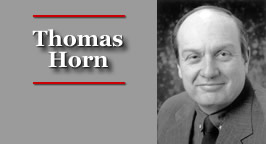
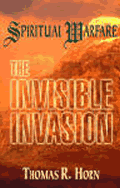
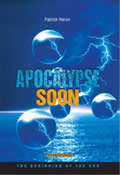
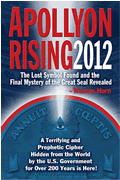








 Share
This Article
Share
This Article